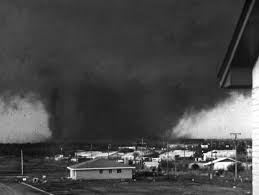
Introduction
Tornadoes are one of nature’s most ferocious phenomena, capable of causing unprecedented destruction in a matter of moments. With 2023 seeing an uptick in tornado activity across various regions, the importance of understanding these violent storms has never been more critical. Their unpredictability poses significant risks to lives and properties, making it essential for communities to enhance preparedness and response strategies.
The Science Behind Tornadoes
Tornadoes form primarily from severe thunderstorms, known as supercells. The process begins when warm, moist air near the ground meets cooler, drier air above, leading to instability. As these conditions escalate, wind shear—the variation of wind speed and direction at different altitudes—causes the air to begin rotating. When this rotation extends downward and makes contact with the ground, a tornado is born.
Recent Tornado Activity
In June 2023 alone, the United States experienced over 60 tornadoes, particularly impacting states in the Midwest and southern regions. For instance, a series of tornadoes swept through Arkansas and Illinois, leaving behind trails of destruction, including uprooted trees, demolished buildings, and significant power outages. The National Weather Service reported that these tornadoes caused injuries to dozens of individuals but, fortunately, no fatalities were recorded. Storm forecasting improvements have played a crucial role in enhancing public safety by issuing timely warnings and alerts.
The Impact and Preparedness
The aftermath of tornadoes can be devastating. Communities often face challenges in recovery due to damaged infrastructure and resources. The Federal Emergency Management Agency (FEMA) emphasizes the importance of emergency preparedness plans, urging families to have disaster kits and establish communication plans. Educational programs on tornado safety have also gained traction, focusing on teaching students and households how to respond effectively when warnings are issued.
Conclusion
As climate patterns evolve and weather-related disasters increase, understanding tornadoes is vital for safeguarding lives and property. While advancements in weather technology have improved forecasting efforts, community awareness and preparedness remain key in mitigating tornado risks. The only way to effectively minimize the threat of tornadoes is through proper education, timely alerts, and community preparedness efforts. As we approach the peak of tornado season, it is imperative to stay vigilant and informed.



